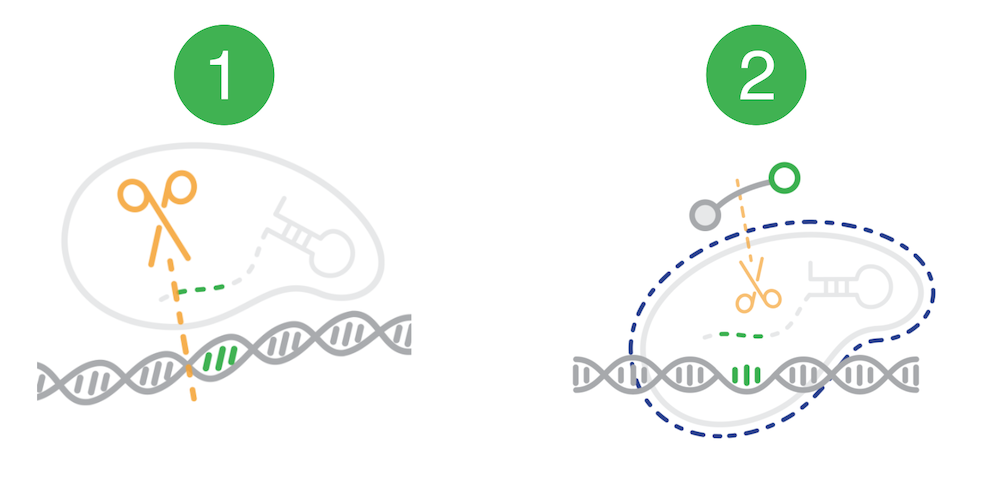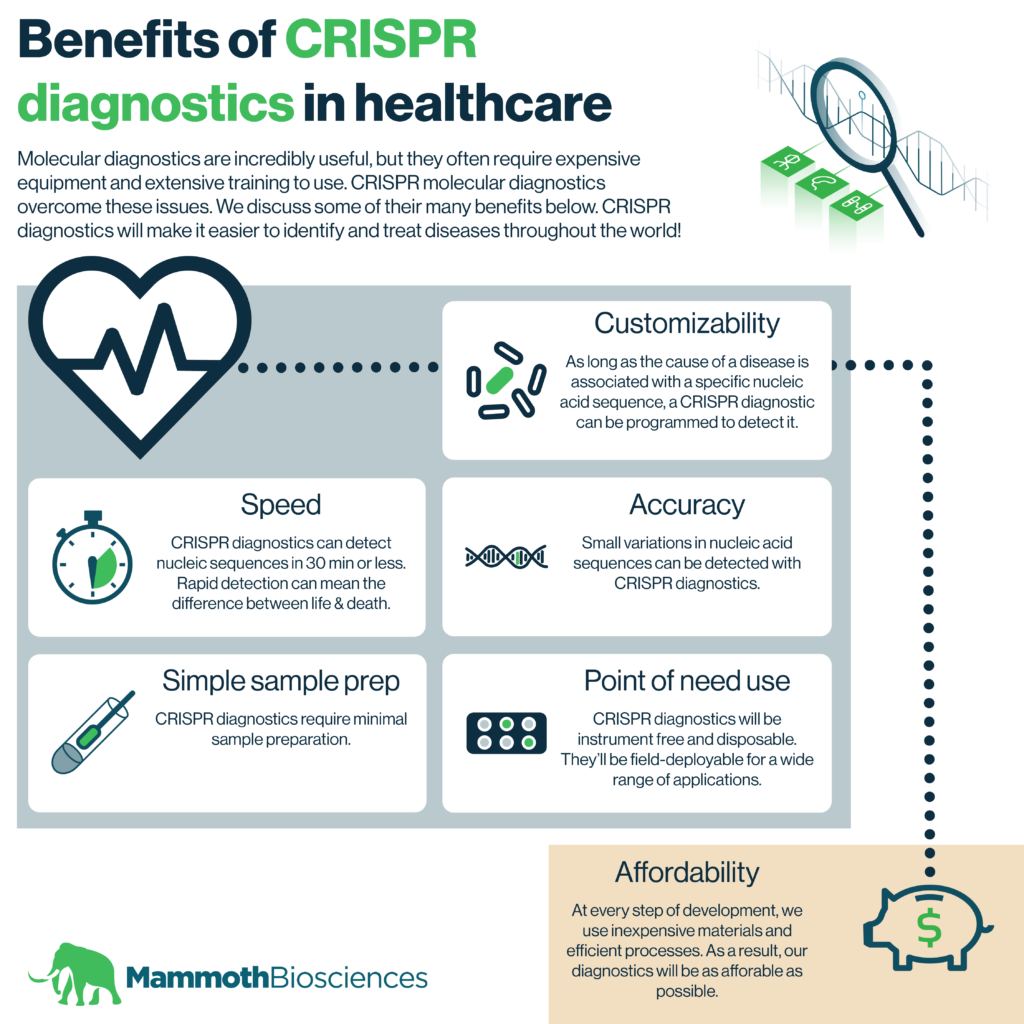Tyler Ford
06/11/2019

Diagnostic tools identify the causes of illnesses. They make it easier for doctors to provide appropriate treatment. This prevents patient suffering. It also limits the spread of disease.
Doctors can recognize many diseases according to their symptoms. Yet, diverse pathogens (the organisms and viruses that cause diseases) can cause similar symptoms. This is a problem because different pathogens respond to different treatments. For example, a bacteria might be able to resist a particular antibiotic. A good diagnostic will identify such bacteria. Thus, a doctor won’t waste time prescribing an antibiotic that doesn’t work.
Doctors have many ways to identify pathogens. They can grow pathogens from patient samples. They can also look for symptoms indicative of particular pathogens. More recently, doctors started using molecular diagnostics. These sophisticated tools detect small components of pathogens. Such components include proteins or nucleic acids (DNA/RNA). For example, they might test patient samples using molecules that attach to specific pathogen proteins. They might also read a pathogen’s DNA to precisely identify it.
Molecular diagnostic tools are very useful, but they often require expensive equipment and training to use. CRISPR diagnostics overcome these issues. We discuss their many benefits below. CRISPR diagnostics will make it easier to identify and treat diseases throughout the world!
Learn about the types of diagnostic tests for COVID-19
How do CRISPR diagnostics work?
CRISPR diagnostics have two main parts:
- Guidable molecular scissors. These first cut specific nucleic acid sequences that the user wants to detect. After cutting a user-specified sequence, these complexes non-specifically cut other nucleic acids.
- Modified nucleic acids. These produce a visual signal when cut. They are only cut if the user-specified nucleic acids are cut first. These modified nucleic acids make it easy to observe when the user-specified nucleic acids have been detected (cut).

When added to a nucleic acid sample, the molecular scissors first cut the user-specified sequence if present. Successful specific cutting activates the scissors to cut many other sequences non-specifically. Non-specific cutting signals that the scissors found the user-specified sequence. In CRISPR diagnostics, creative techniques make it so this non-specific cutting results in a visual cue. For example, the non-specific sequences might glow when cut. The visual cue shows that a sample contains the user-specified sequence.
You can think of the molecular scissors like castle guardsmen. First they detect an enemy (the user-specified DNA or RNA sequence). Then, they sound an easily observable alarm (cut DNA/RNA nonspecifically). Finally, other soldiers (researchers/doctors) can prepare for battle (treatment).
CRISPR diagnostics can detect bacteria, viruses, and mutations in human DNA. To do so, researchers simply guide the molecular scissors to DNA or RNA indicative of the bacteria, viruses, or mutations they’d like to detect.
Benefits of CRISPR diagnostics

Customizability: CRISPR diagnostics can detect a wide range of diseases. As long as a disease is associated with a DNA or RNA sequence, a CRISPR diagnostic can be programmed to detect it.
Speed: CRISPR diagnostics can detect DNA and RNA sequences in 30 minutes or less. Older diagnostic techniques could take many hours or even days. Rapid detection can mean the difference between life and death.
Accuracy: Single letter changes in DNA and RNA are important. They can determine whether a particular treatment will work. CRISPR diagnostic tools can detect these single letter differences. Researchers just pair the appropriate molecular scissors with the appropriate guide molecules.
Simple sample preparation: Some molecular diagnostics require complex sample preparation. CRISPR diagnostics require minimal sample preparation.
“Point-of-Need” use: Many other molecular diagnostic tools use complex and expensive equipment. For example, researchers often use the polymerase chain reaction (PCR) to detect DNA/RNA. This reaction requires a device that cycles through various temperatures. This device can be expensive. To view the results of the reaction, researchers need extra equipment. Other molecular diagnostics technologies also use expensive devices. CRISPR diagnostics have no expensive equipment and their results can be viewed with the naked eye.
CRISPR diagnostics are simple, versatile, and easy to use. They will enable clinicians to take the appropriate actions to treat disease. They can prevent patient suffering throughout the world. We hope these fantastic tools will make healthcare more effective and less expensive!
Learn how CRISPR diagnostics can impact infectious disease
Learn about our CRISPR-based SARS-CoV-2 detection platform for commercial labs!
